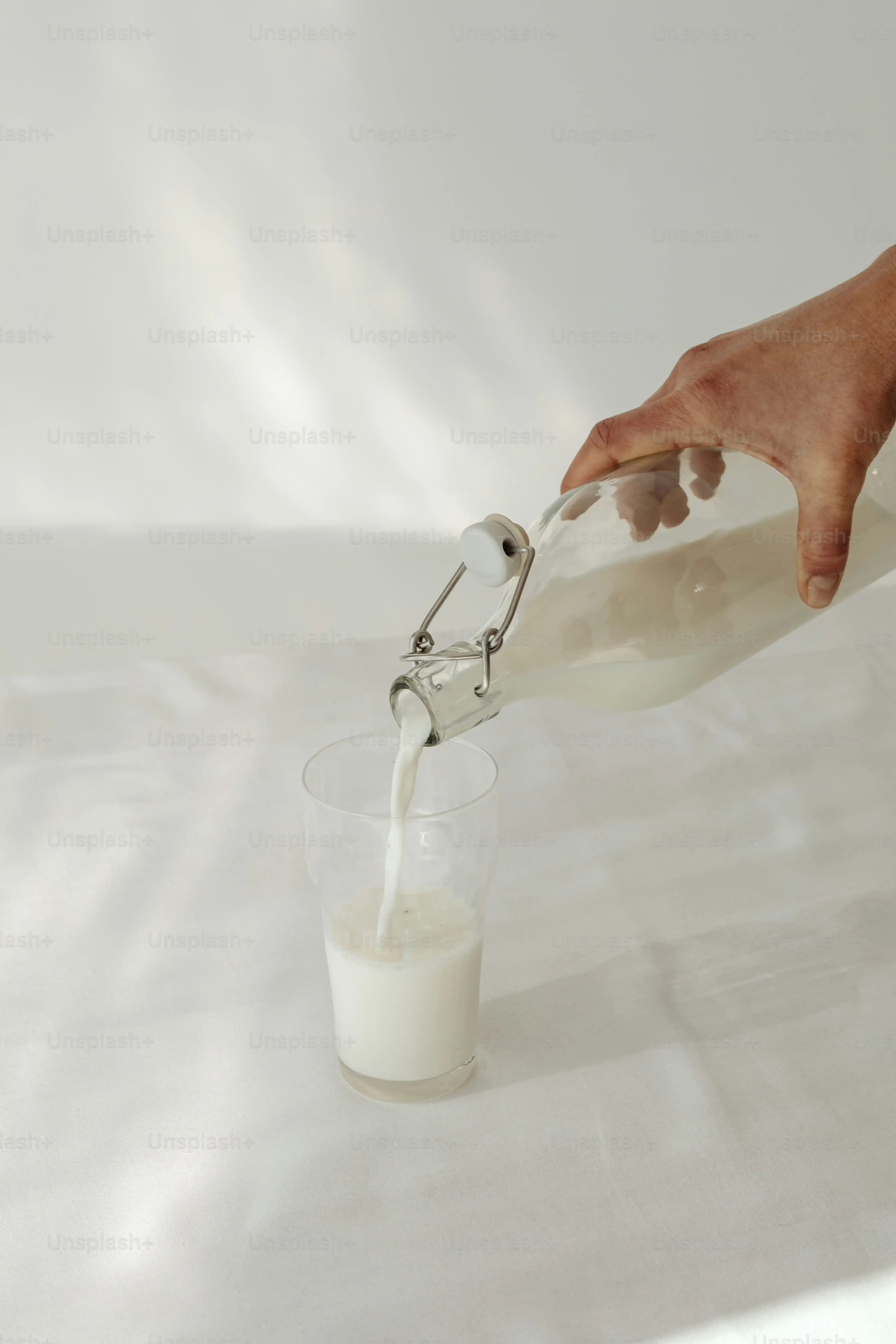Table of Contents
So, you've grabbed that carton of low-fat milk, maybe trying to cut calories or just because it was on sale, and now you're standing there with your frother, wondering, "can you froth low fat milk?" It's a question that haunts many home baristas, often resulting in a thin, bubbly mess that quickly separates, leaving you with sad, watery coffee and a pathetic excuse for foam on top. Forget those dreamy latte art pours you see online – low-fat milk can feel like the enemy of a good microfoam.
Can You Froth Low Fat Milk? The Truth About Skim Foam

Can You Froth Low Fat Milk? The Truth About Skim Foam
So, Can You Actually Froth Low Fat Milk?
Alright, let's get straight to it. The burning question: can you froth low fat milk? The short answer is yes, you absolutely *can* froth it. Now, before you get too excited, let's manage expectations. You're not going to get the same luscious, stable microfoam that clings to the side of the mug like a well-trained puppy with whole milk. That's just science, folks. Less fat means less structure to hold those tiny air bubbles together.
Think of it like building a house. Whole milk has all the sturdy bricks and mortar (fat and protein) to create a solid wall. Low-fat milk? It's got the mortar (protein), but maybe only half the bricks (fat). You can still build a wall, sure, but it might be a bit flimsier, more prone to collapse, and definitely not as smooth and dense. So, while you can inject air into low-fat milk and create bubbles, the resulting foam tends to be lighter, often larger-bubbled, and separates faster. It's foam, but maybe not the kind you see in fancy coffee shop photos.
What Skim Foam Really Looks Like (and Doesn't)
When you do manage to whip up some foam from low-fat or skim milk, don't be surprised if it looks a bit... airy. It's often characterized by bigger bubbles right at the top, almost like soap suds, with a thin, watery layer of heated milk underneath. That beautiful, glossy paint-like texture you aim for with whole milk? Yeah, that's a rare sighting with low-fat.
This quick separation is the main frustration. You pour your coffee, spoon on the foam, and within minutes, it's dissolved back into the liquid or sitting on top like a sad, deflated cap. It lacks the body and sweetness that milk fat contributes, leaving your drink feeling a bit hollow. It's not the end of the world, and it still adds *something*, but it's certainly not the star of the show. Knowing this upfront helps avoid disappointment when your latte looks less like art and more like a science experiment gone slightly wrong.
Why Low Fat Milk is Tricker: It's About More Than Just Fat

Why Low Fat Milk is Tricker: It's About More Than Just Fat
The Fat Factor: It's Like Glue for Bubbles
so we've established that you *can* froth low fat milk, but it's a pain. Why, exactly? The biggest culprit, as you might guess, is the lack of fat. Think of milk fat as the tiny, edible glue that holds your foam together. When you steam or froth milk, you're forcing air into the liquid, creating bubbles. The proteins in the milk help to form the initial bubble structure, but the fat globules get in there, too. They act as stabilizers, making the bubble walls stronger and more resistant to popping. With less fat hanging around, those delicate bubble walls are left more vulnerable. They collapse faster, they merge into bigger, uglier bubbles, and they don't give you that smooth, uniform texture you crave. It's like trying to build a sturdy fort with fewer LEGO bricks – it just won't hold up as well.
Protein Plays a Role, But Fat Still Steals the Show
Now, milk protein is also crucial for foam formation. Casein and whey proteins denature (unfold) when heated and whipped, creating a matrix that traps the air. This is why non-dairy milks with decent protein content, like soy or oat milk, can sometimes froth reasonably well, even if they're low in fat. However, even with good protein levels, low-fat dairy milk still struggles because it's missing that critical fat contribution to stability. It's a team effort, and the fat is the star player when it comes to keeping that foam looking pretty and lasting longer. Without enough of it, the protein matrix is weaker, and the foam structure degrades quickly. You might get volume initially, but watch it closely – it starts to disappear faster than free samples at a coffee convention.
So, does more protein make up for less fat?
- Protein helps *form* the bubbles.
- Fat helps *stabilize* the bubbles.
- Low-fat milk has decent protein but insufficient fat for robust, long-lasting foam.
- It's the combination that matters most for that perfect microfoam.
How to Actually Froth Low Fat Milk: Techniques and Tools That Work

How to Actually Froth Low Fat Milk: Techniques and Tools That Work
How to Actually Froth Low Fat Milk: Techniques and Tools That Work
so we know low-fat milk isn't the easiest customer, but that doesn't mean you're doomed to flat coffee. You *can* improve your odds significantly by focusing on technique and using the right tools. It's less about the milk itself and more about how you treat it. Whether you're wielding a steam wand on an espresso machine or using a separate frother, getting decent foam from low-fat milk requires patience and precision. You need to introduce just the right amount of air, heat it to the optimal temperature without scalding it, and manage those fragile bubbles carefully. Think of it as convincing the milk to do something it's naturally reluctant to do – it takes finesse.
Your Low Fat Foam Isn't Working? Troubleshooting Common Problems

Your Low Fat Foam Isn't Working? Troubleshooting Common Problems
Is Your Milk Fresh Enough?
so you've followed all the steps, tried the techniques, and your low-fat milk foam is still a sad, bubbly mess. What gives? The first thing to check is the milk itself. Milk isn't like wine; it doesn't get better with age, especially when it comes to frothing. As milk sits, even before it smells or tastes off, the proteins can start to break down slightly. This degradation messes with their ability to form and hold those delicate air bubbles. If that carton has been open in your fridge for more than a few days, or if it's nearing its expiry date, you're fighting an uphill battle. Fresh milk, as close to the purchase date as possible, gives you the best chance at achieving any kind of stable foam, even when you're trying to figure out can you froth low fat milk effectively.
Are You Heating It Right? Temperature Matters
Another major culprit when your low fat foam isn't working is temperature. Heating milk too little won't allow the proteins to denature properly to trap air. Heating it too much, however, will cook the proteins and create large, unstable bubbles that disappear quickly. Aim for that sweet spot, typically between 140°F and 155°F (60°C to 68°C). If you don't have a thermometer, this is usually when the outside of the pitcher is almost too hot to comfortably hold for more than a second. Scalded milk not only tastes terrible but also makes for miserable foam. Getting the temperature dialed in is critical, perhaps even more so with finicky low-fat milk.
Problem | Possible Cause | Fix |
|---|---|---|
Large, quickly disappearing bubbles | Milk too old or overheated | Use fresh milk, control heating temperature |
No foam forming at all | Milk too cold or insufficient air introduced | Ensure milk is cold initially, check frothing technique/equipment |
Foam separates rapidly | Low fat content, improper technique | Refine technique, consider slightly higher fat milk if possible |
Could Your Equipment Be the Issue?
Sometimes, it's not you, it's your gear. Entry-level espresso machines might not have steam wands powerful enough to create the necessary turbulence and heat for good microfoam, especially with less forgiving low-fat milk. Similarly, handheld or automatic frothers can vary wildly in performance. If your wand isn't clean (even a tiny bit of dried milk can disrupt steaming) or your frother isn't generating consistent power, you'll struggle. Make sure your equipment is clean, functioning correctly, and capable of generating sufficient steam pressure or whisking action. Trying a different frothing method or ensuring your steam wand is fully purged before use can sometimes make all the difference in getting your low fat foam to cooperate.
So, Can You Froth Low Fat Milk? The Final Word
So, there you have it. The answer to "can you froth low fat milk?" isn't a simple yes or no, but rather a conditional "yes, if you work at it." You won't get the same forgiving texture as whole milk, and latte art might remain a distant, frustrating dream. But with the right technique, understanding the milk's limitations, and avoiding rookie mistakes like using previously frozen milk, you can absolutely achieve a usable, even decent, foam. It requires patience, practice, and maybe a slightly better steam wand than the one that came with your entry-level machine. Don's expect miracles, but don't settle for bubbly disappointment either.
